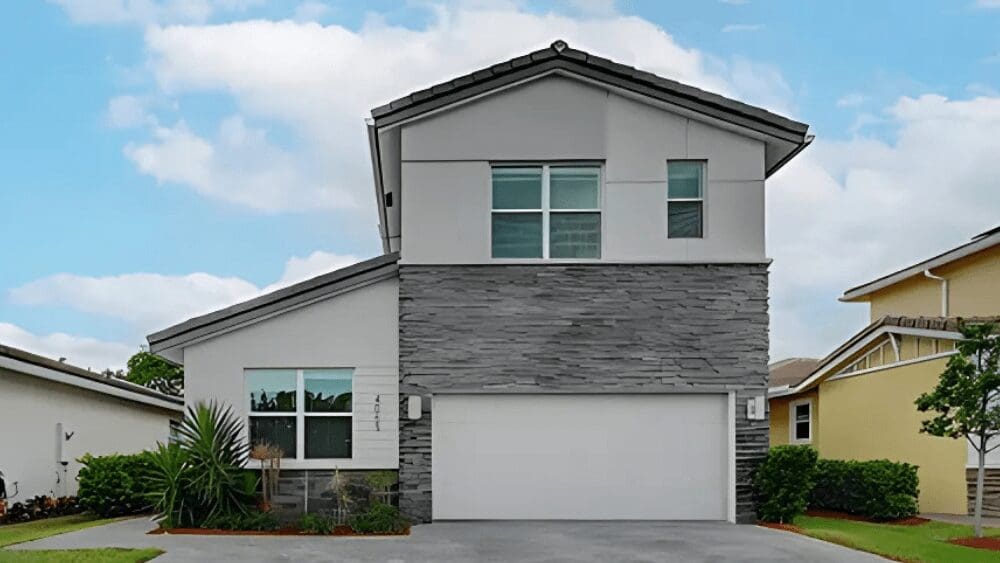
You’ve always loved the outskirts of your city. And one Sunday on your scenic drive, you notice that the house you’re always eyeing (with that enormous front yard!) is for sale. Many wishful homeowners would just keep on driving and try to forget that their dream home is on the market … but you know how to apply for a USDA loan, so you turn your car around and head home to do just that. If you’re a would-be homebuyer searching for a home in a rural or even suburban area, you could potentially qualify for a United States Department of Agriculture (USDA) loan. These loans — like FHA and VA loans — are backed by the government. To get one, you’d go to an approved lender, and the government in turn guarantees it for the bank from which you borrowed. Among its attractive features? You can get a USDA loan with no money down on the house. But only certain homebuyers are eligible. If you’re shopping for homes in non-urban areas and think you might qualify for a USDA loan, here’s an expert-backed primer for how to get started in the process, and how to see it through to approval… and happy homeownership. First, be aware that you can only get a USDA loan for a house in certain eligible areas that the government deems “rural,” so make sure your area is included; a real estate agent with experience in USDA loans can help. Then, assess your basic eligibility to qualify. For a USDA loan, you should have a minimum FICO score of 640. “While the USDA does not designate a minimum credit score, lenders will have a minimum requirement of typically 640,” explains mortgage loan officer Jane Hammond. “Not only must the ideal candidate have a solid credit score; many times the credit lines are overlooked.” She notes that a buyer should have at least four active lines of credit. If you’re not there yet, take some proactive steps to build your credit: Get a credit report, review it and resolve any issues, pay down your balances, and tackle other doable actions to get that FICO score up. Also, to qualify for this type of loan, you can’t earn more than the USDA income limit for the area where you want to buy. This limit varies depending on where the house is located, so spend some time researching what the threshold is in the region. “The ideal candidate has solid income but cannot exceed $85,850 for households up to four people. There are higher limits for more expensive areas,” Hammond explains. It’s not just the dollar amount of what you earn, but also the specifics that comprise your income that count. “Candidates must have a two-year employment history in the same job or industry. Income can be one of the most complex factors in qualifying for USDA,” Hammond says. “If a candidate has any unusual income factors, such as commission or court orders, they may need a mortgage professional to work with the lender to document the income in more detail.” Candidates for USDA must adhere strictly to the housing-to-income and total debt-to- income ratios as well. The housing payment — including homeowners insurance, taxes, the loan principal, and the loan interest — must not exceed 29% of the total household monthly income, Hammond explains. And all debt, including car payments, credit cards, and other types of loans, must not exceed 41% of the total household monthly income. “One of the best features of the USDA loan is, of course, no money down, but candidates must also have the ability to pay other costs associated with closing a loan,” Hammond says. “Taxes, fees, and title insurance are all examples of costs that must be paid when establishing a loan.” Many lenders are qualified to offer USDA loans. So as with any other mortgage, you should talk to multiple lenders to get the best deal. Get all your paperwork together. Then shop around for someone you trust, and who is experienced in this type of lending. “Look for a lender that has knowledge of the loan and works with plenty of first-time buyers — since the USDA loan can be first-time-buyer friendly,” explains Andrina Valdes, COO of Cornerstone Home Lending. “A lender with USDA experience will know the ins and outs of the loan, like the fact that a USDA loan allows gift funds to be used toward closing costs. This can be another big perk that saves a first-time homebuyer money.” She adds that USDA loans don’t have a first-time homebuyer requirement — they can be used by repeat buyers and also when refinancing a mortgage. Hammond suggests working with a loan officer who works for a mortgage broker. “While banks can offer USDA loans, using a bank gives the client only one loan option,” she says. “A mortgage loan officer (MLO) who works for a broker can shop different lenders on the client’s behalf to get the best rate and the most careful underwriting if there are any concerns with the client’s qualifications.” When you find a property that’s a good fit for you, you’ll want to be able to secure your financing and make a solid offer as soon as possible. This means you’ll need to get preapproved before you actually start shopping for a house. You can get preapproved through multiple lenders if you like; you only have to actually apply and get a mortgage with one. “The preapproval process is essential to be prepared for the offer process,” especially in hot housing markets, Hammond says. When markets favor sellers, “houses are going under contract quickly with multiple offers. The buyer must be able to put a solid offer before sellers with options.” Beyond that, you also need to know what home you can really afford. “It’s critical to get prequalified — and take the extra steps for early loan approval — for a USDA loan so that you know how much house you can afford,” Valdes says. “Without this information, you’re more likely to waste time house-hunting in the wrong price range.” You can keep your preapprovals open in case something goes wrong mid-deal and you need to change lenders, but before you go any further, you’ll want to figure out who’s offering you the best deal and decide to move forward with them as your lender. USDA loans can take more time and effort, Hammond notes, so it’s important to select a team that you’re confident will put in the time to get the best rate for you. Remember, the house needs to be in a USDA-approved area. An agent with USDA loan experience can help you find eligible homes. The good news: “There are many more options for USDA-eligible properties than people think, so don’t overlook this affordable loan until you’ve looked into it,” Valdes says. “An estimated 97% of land in the U.S. is USDA-eligible. Many buyers also don’t know that USDA zones include a variety of single-family homes, as well as some condos, townhomes, and houses in gated communities.” To qualify, the property must also be your primary residence. “And the house must be in good condition,” Hammond explains. (The home’s condition is verified at appraisal.) Like with any other house, you’ll need to make an offer on the house that the seller accepts, with or without additional negotiating. You don’t want to overpay for the house, but you don’t want to make an offer that’s too low and lose your chance to own it, so come in just right with your offer. Being flexible on points the seller really cares about will help compel them to choose you if the property is in a competitive market. “When preparing an offer on an USDA home, the candidate can structure the offer to include money for closing costs,” Hammond adds. “There is a limit of 6% of the sale amount allowed, but this allowance can be significant to cover the cash needed to close.” Working with an experienced agent is crucial so that they can structure a deal that works to the advantage of all parties. The purchase agreement is the official contract to buy the house and will start the loan application process. This is the most common type of real estate contract, and it includes all the essential details, including price, timing, contingencies, closing costs, and more. When you’re ready, your loan officer or mortgage broker will submit the loan application with all the documentation required on your behalf. An underwriter will process the documents and will run another check on your credit before the loan closes. The lender will order a USDA loan appraisal. The appraiser will check to see that the home meets USDA standards and is in move-in condition; if it doesn’t measure up, then any issues will need to be fixed before closing can happen. The appraisal may take a week or so; add on more time if the home needs to be reappraised after repairs. As with other home purchases, you’ll go through a home inspection, which comes with a fee but could save you money in the long run; title research, to make sure the seller is clear to sell the house and is the legal owner; and, eventually, a final walkthrough, your last chance to check out the home and confirm it’s as you expect it. The main thing to know about any closing, Hammond says, is that you will be asked for a lot of documentation. “You may be asked for documents that seem difficult to get, and you may be asked for the same information at the beginning of the process and at the end to verify things have not changed,” she says. “It can be a frustrating process, but the MLO will walk through the entire process because their whole job is to see you reach your goal to be a homeowner.” All told, the process of closing on a home with a USDA loan may take several weeks to two months. “It helps to remember that there’s a chance that a USDA loan approval may take longer than a conventional loan approval, for example, because the USDA also needs to approve the loan application,” Valdes explains. “This may add some, but not much, time to the closing process.” But in the end, it will all be worth it if a USDA loan is right for you and gets you your new home, and the process can be reasonably streamlined in the home stretch. “There aren’t necessarily differences at closing [than with other loans],” Hammond says. “Once you have worked with both your professional Realtor and MLO, getting to closing should be easy.”Assess your eligibility
Talk to a few lenders
Get preapproved
Decide which lender to use
Find your house
Make an offer
Sign the purchase agreement
Submit the loan application
What’s next?



